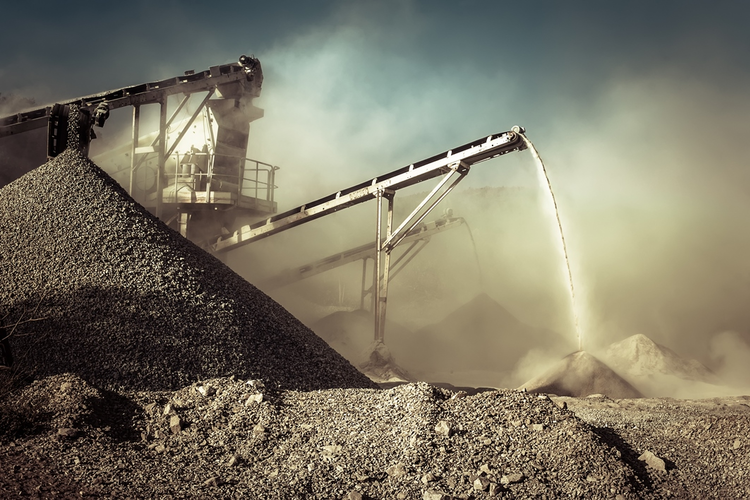Understanding and calculating machine efficiency is crucial if you’re looking to optimize your manufacturing or industrial processes at a crushing plant. One important metric to consider is screen efficiency, which measures the effectiveness of a screening process in separating the desired materials from unwanted ones.
Screening efficiency, on the other hand, refers to the percentage of materials that pass through the screen compared to the total amount of materials that need to be screened. By measuring these metrics, you can gain insights into the performance and productivity of your machinery.
In this section, we will explore the practical steps on how to calculate machine efficiency. We will also delve into the concepts of screen efficiency, screening efficiency, and the formulas used to measure these metrics. By following these calculations, you can make informed decisions to improve productivity and reduce costs.
So, let’s get started and learn how to calculate machine efficiency, including the screen efficiency formula and the screen effectiveness formula.
Understanding Machine Efficiency
Before diving into the calculation process, it’s important to understand what machine efficiency entails. Essentially, machine efficiency is the measure of how well a machine converts input power into useful output power. In other words, how much energy goes into the machine versus how much is actually being used to perform the intended task. This metric is particularly crucial in industrial and manufacturing processes where optimizing machine efficiency can result in significant cost savings and productivity gains.
One factor that contributes to machine efficiency is screen efficiency. This refers to the ability of screens, such as those used in vibrating screeners or sifters, to effectively sift and sort materials. The better the screen efficiency, the less energy is wasted, and the more efficient the overall machine performance. Ultimately, understanding and measuring machine efficiency can help businesses make informed decisions about their equipment, processes, and operations.
The Role of Screen Efficiency
Screen efficiency plays a vital role in many industrial applications. For example, in the mining industry, vibrating screeners are used to separate ore from waste rock. In the food processing industry, sifters are used to remove contaminants from ingredients. In each of these scenarios, optimizing screen efficiency can improve productivity, reduce energy consumption, and lower operating costs.
Screen efficiency is typically calculated using one of two formulas: the screen efficiency formula or the screen effectiveness formula. These formulas take into account factors such as the mass of the material being screened, the size of the screen openings, and the angle at which the screen is inclined. By measuring screen efficiency, businesses can gain insights into their screening equipment’s performance and identify improvement opportunities.
Calculating Machine Efficiency
Calculating machine efficiency involves a multi-step process. First, you need to determine the total input power the amount of energy supplied to the machine. Next, you need to calculate the useful output power or the amount of energy being used to perform the intended task. Finally, you can divide the useful output power by the total input power to get the machine efficiency percentage.
The screen efficiency and effectiveness formulas are two key equations used to measure screen performance. The screen efficiency formula is used to determine the efficiency of a vibrating screen or sifter. The formula is:
Screen Efficiency = (mass of material that passes through the screen)/(total mass of material in the feed)
The screen effectiveness formula is a more comprehensive measure of screen performance. It considers not only the mass of material that passes through the screen but also the mass of oversized material that is rejected by the screen. The formula is:
Screen Effectiveness = (mass of material that passes through the screen)/(total mass of material in the feed + mass of oversize material)
Businesses can identify opportunities to improve screen efficiency and overall machine performance by measuring and analyzing these metrics.
Calculating Machine Efficiency
Calculating machine efficiency is a critical process that can help you make informed decisions about your manufacturing or industrial operations. By measuring key metrics such as screen efficiency and screen effectiveness, you can gain valuable insights into how your machinery is performing.
Step-by-Step Guide to Calculating Machine Efficiency
Here’s a step-by-step guide on how to calculate machine efficiency:
- First, measure the total time your machine is running. This includes both productive (or “uptime”) and non-productive (or “downtime”) time.
- Next, calculate the total number of parts or products your machine has produced during that time.
- Then, calculate the amount of time your machine was operating at full capacity. This is also known as “ideal cycle time.”
- Using these values, you can now calculate your machinery’s overall equipment effectiveness (OEE). The formula for OEE is:
| OEE = Availability x Performance x Quality |
| Availability = Uptime / Total Time |
| Performance = (Ideal Cycle Time x Total Parts Produced) / Uptime |
| Quality = Good Parts Produced / Total Parts Produced |
The screen efficiency and effectiveness formulas are also important metrics to consider, especially if your operations involve screening processes. The screen efficiency formula is:
Screen Efficiency = (Undersize Removed / Total Undersize in the Feed) x 100
The screen effectiveness formula, on the other hand, is:
Screen Effectiveness = (Oversize Removed / Total Oversize in the Feed) x 100
By following these calculations, you can better understand your machinery’s performance and productivity. This, in turn, can help you make informed decisions about optimizing your operations and increasing efficiency.
Optimizing Machine Efficiency
Boosting machine efficiency is critical for any business looking to improve productivity and lower operational costs. Here are some effective strategies to achieve these goals:
1. Implement Preventive Maintenance
One of the best ways to optimize machine efficiency is to schedule regular maintenance checks. This strategy helps identify and address potential issues before they become costly problems. Through preventive maintenance, you can ensure that your machinery is always running at peak performance levels, reducing the likelihood of downtime due to breakdowns or malfunctions.
2. Monitor Performance
Monitoring machine performance is crucial to identifying areas that need improvement. Establishing KPIs (Key Performance Indicators) to measure productivity, yield, and uptime can help you track progress and identify opportunities for growth. Regular performance reviews can help ensure your machinery operates at its best, allowing you to make informed decisions to enhance efficiency.
3. Maximize Machine Upgrades
Upgrading your machinery can be a significant investment, but it can also lead to substantial improvements in efficiency. Newer machines are often more energy-efficient and have features that improve productivity, resulting in lower operational costs in the long run. Consider upgrading your machinery to optimize efficiency and gain an edge in your industry.
4. Continuous Improvement Initiatives
Continuous improvement initiatives involve ongoing assessments and improvements to optimize machine efficiency continually. This approach involves identifying areas for improvement and implementing changes to enhance performance. By constantly seeking to improve your machinery’s efficiency, you can stay ahead of the competition and ensure your business always operates at its best.
Implementing these strategies can lower your operational costs while enhancing productivity. You can optimize your machine efficiency and stay ahead of the competition through ongoing maintenance, performance monitoring, and continuous improvement initiatives.
Conclusion
Calculating machine efficiency is essential for any business looking to optimize its operations and reduce costs. By understanding the metrics of screen efficiency and screen effectiveness, you can gain insights into your machinery’s performance and make informed decisions.
To start, follow the step-by-step guide we provided on how to calculate machine efficiency. This will give you a clear picture of your machinery’s productivity levels and help you identify opportunities for improvement.
Once you clearly understand your machine’s efficiency, it’s time to optimize it. Consider implementing strategies like preventive maintenance, performance monitoring, and continuous improvement initiatives. These measures can help you enhance productivity while keeping operational costs low.
In conclusion, by measuring and optimizing machine efficiency, you can ensure that your machinery operates at its peak performance levels. This will benefit your business in the long run and help you stay competitive in your industry.

